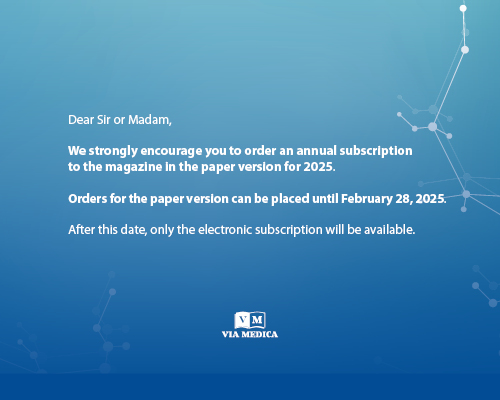A 95-year-old female was admitted to the cardiology ward due to lead-dependent infective endocarditis with concomitant pocket infection. Her previous medical records included dual-chamber pacemaker implantation in 2007 due to the atrioventricular second-degree block and subsequent reimplantation in 2019 (the first due to battery depletion and the second due to the system malfunction after a direct trauma). During hospitalization, she underwent targeted antibiotic therapy with subsequent transvenous lead extraction and, following the expert recommendations, she was qualified for a Micra atrioventricular (Micra AV) implantation as the therapy of choice [1].
The implantation of the Micra AV synchronous ventricular leadless pacemaker (Medtronic, Minneapolis, MN, US) took place on May 29, 2020 (Supplementary data). We confirmed the active fixation of the three lines before the withdrawal of the delivery system. Basic electrical parameters from device interrogation are summarized in Supplementary material, Video S1, Table 1. Manual optimization of P-wave detection before discharge from the hospital significantly increased detection of atrial mechanical contraction and atrial synchronous ventricular pacing (AsVP) from 47.7% to 92.6%. It must be emphasized that during the ambulatory control we repeatedly reprogrammed pacemaker settings to optimize AsVP. Above all programmable variables the shortening of the A3 window end and increasing atrial sensitivity allowed us to achieve AsVP of 86.1% and 68% during 12 and 24 months of follow-up (FU), respectively (Table 1). We considered this a satisfactory result although the results of the Marvel 2 Study were more promising and described an average AsVP of 89.2%. However, our data are in line with real-life reports from other centers [2].
|
Implantation |
Discharge |
1 M FU |
12 M FU |
18 M FU |
24 M FU |
|
|
QRS amplitude, mV |
9.9a |
17.2 |
15.8 |
19.4 |
>20 |
19.6 |
|
Impedance, Om |
680 |
580 |
780 |
760 |
710 |
750 |
|
Threshold, V/0.24 ms |
0.50 |
0.50 |
0.38 |
0.50 |
0.50 |
0.50 |
|
AM-Vs, % |
— |
0.0 |
<0.1 |
<0.1 |
<0.1 |
<0.1 |
|
Vs, % |
— |
0.0 |
0.3 |
0.7 |
0.7 |
0.7 |
|
AM-Vp, % |
— |
47.7 |
92.6 |
86.1 |
75.3 |
68 |
|
Vp, % |
— |
52.3 |
7.1 |
13.2 |
23.1 |
31.3 |
Originally, the MICRA leadless pacemaker was limited to ventricular pacing in the context of permanent atrial fibrillation [3]. The main advantages of such a pacing system are minimally invasive procedure, short impulse duration with prolonged battery life, and reduced incidence of complications, including device-related infections. The Micra AV system, in turn, is dedicated to patients with high-grade atrioventricular block and preserved sinus rhythm, in whom the risk of complications of endocardial dual-chamber pacemaker is significantly increased [3]. It maintains AV synchrony at rest, increases stroke volume, and reduces the probability of pacemaker syndrome occurrence. The Micra AV algorithm is based on the accelerometer’s ability to detect mechanical changes during cardiac cycles [4]. The accelerometer signal expresses four segments of cardiac activity. The mechanical signals of blood flow from the accelerometer, as well as the surface electrocardiogram, are shown and described in Supplementary material, Figure S1. Proper sensing of atrial mechanical activity is crucial for synchronized ventricular pacing; hence it is important to perform programming of the atrial sensing predischarge in outpatient settings. As suggested by other authors, successful atrial synchronous ventricular (VDD mode) pacing is more likely to occur in sedentary patients with lower heart rates, preserved contractile atrial function, and proper repetitive reprogramming of the device [4, 5].
Supplementary material
Supplementary material is available at https://journals.viamedica.pl/kardiologia_polska
Article information
Conflict of interest: PM declares support from Medtronic Company. Other authors declare no conflict of interest concerning the article.
Funding: None.
Open access: This article is available in open access under Creative Common Attribution-Non- Commercial-No Derivatives 4.0 International (CC BY-NC-ND 4.0) license, allowing to download articles and share them with others as long as they credit the authors and the publisher, but without permission to change them in any way or use them commercially. For commercial use, please contact the journal office at kardiologiapolska@ptkardio.pl.



